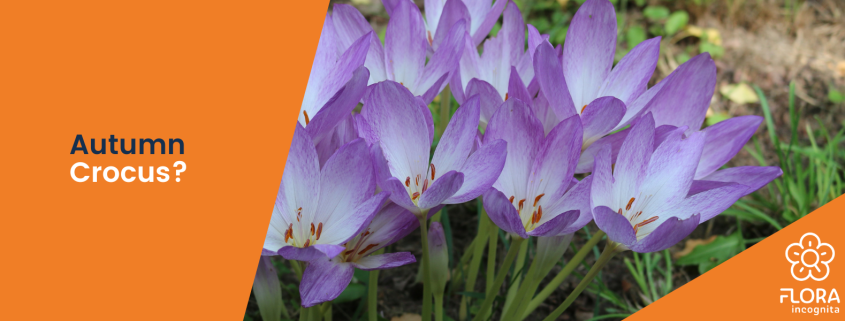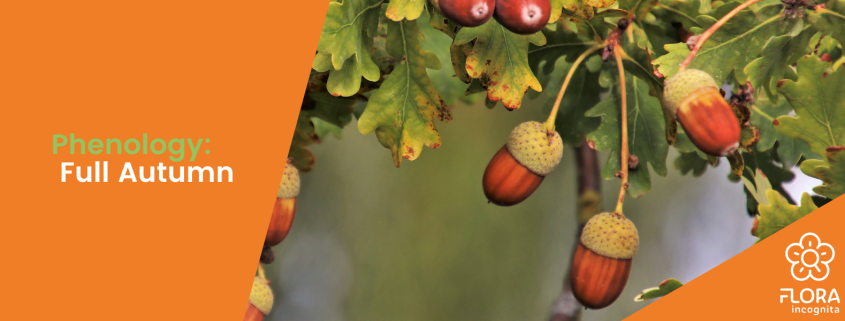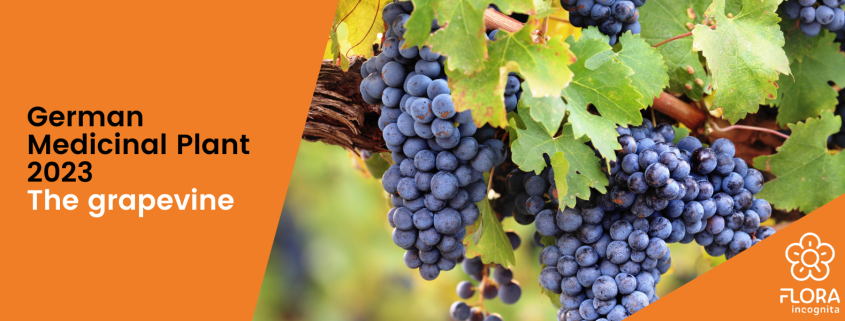A glance into nature reveals ripe dogwood cherries lying on the ground, and autumn crocuses have faded away. A new phenological season begins: Full Autumn. Perhaps it will bring us a “Golden October” with many warm days, but weather is not an indicator of phenology. Phenology observes the annual developmental cycle of plants, and thus, Full Autumn is defined by the fruit ripening of the pedunculate oak, followed by late pear varieties and grapevines. The highlight is the foliage coloration of the horse chestnut. Full Autumn comes to an end when the leaves of the European beech and pedunculate oak change color and begin to fall. On average, Full Autumn lasts from September 17th to October 19th.
Acorns
The pedunculate oak (Quercus robur) belongs to the beech family. It is widespread in Europe and tolerates both (short) waterlogging and dry periods. Consequently, it is found both in lowlands and at elevations of up to 100 meters above sea level. In April-May, the pedunculate oak blooms, and by then, its namesake feature becomes apparent: the flowers (and later the acorns) are borne on 4-6 cm long stalks. Acorns are an important food source for many bird and mammal species (jaybirds, squirrels).
Late Pear Varieties
Comparing apples and pears is rarely a good idea, but one thing can be said: pears (Pyrus communis) need more warmth than apples to unleash their full flavor. Early pear varieties must be consumed quickly and are not suitable for storage. The fruits ripening in autumn can be stored – depending on the variety – well into winter. Classic aromatic pear varieties include Conférence and Gellerts Butterbirne. Among the novelties, the productive variety “David” stands out with firm, sweet, juicy fruits, ripening from early to mid-October.
Grapes
The grapevine (Vitis vinifera) is the Medicinal Plant of the Year 2023 because its fruits (grapes) are rich in secondary plant compounds. These are mainly concentrated in the seeds of the berries. However, they can also be found in the skin and leaves of red grapes. To determine if a grape is ready for harvest, check if all its berries are colored, the fruit stalks are woody, and the seeds inside the berries are brown, not cream-colored, and easily separate from the surrounding pulp. Grapes are best cut off completely from the vine with scissors and can be stored in the refrigerator for up to 14 days – provided spoiled berries are removed beforehand.
Horse Chestnut
There are several species within the horse chestnut genus, but phenologically interesting is the common horse chestnut (Aesculus hippocastanum). By the way, the sweet chestnut, Castanea sativa, from which delicious chestnuts come, is not related to horse chestnuts! The horse chestnut originates from the mountainous regions of the Balkans and has been widely planted as a street tree in Central Europe since the 16th century. White-flowering horse chestnuts often suffer from infestation by the horse chestnut leaf miner. This leads to premature wilting and dropping of leaves in August to early September. If you want to document the foliage coloration of the horse chestnut as an indicator for phenology, please use healthy trees.
This article was displayed in the Flora-Incognita app as a story in autumn 2023. In the app, you can find exciting information about plants, ecology, species knowledge, as well as tips and tricks for plant identification. Why not take a look!



